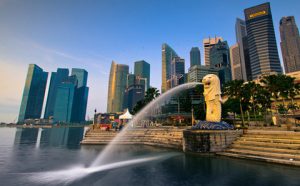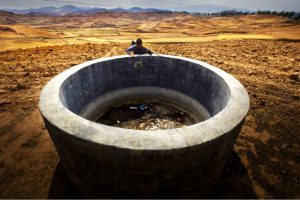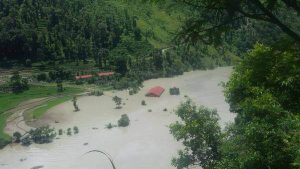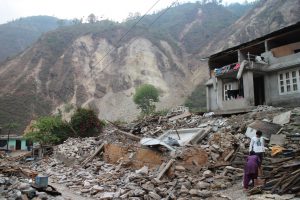Sun Laixing is part of a research team from the University of Maryland and the International Institute for Applied Systems Analysis, which recently published a study on water scarcity in China.
Nick Holdstock (NH): Where is water scarcity greatest in China and what are the main causes?
Sun Laixiang (SL): The greatest problem is on the North China Plain, mainly the Three River Basin, consisting of the Yellow River, the He River and the Wei River. The most serious problem area is along the He River, close to Beijing’s port city, Tianjin. This is historically a dry area, with low precipitation, yet it’s become China’s bread basket. Wheat needs a lot of irrigation, which depletes the water table. In some places the water table has already fallen several hundred metres, so drilling a water well is more like drilling an oil well.
NH: What’s the history of this scarcity?
SL: This is a modern phenomenon. In the past, the centre for grain production was in the south, in the Yangtze River basin. But industry is now the main focus in that area. The North China Plain has always suffered frequent droughts. However, previously there was no modern machinery to pump water from underground. Now every family in the North China Plain can afford to have a well, and to use machines to pump water.
NH: How does the idea of ‘virtual water’ help us to understand water scarcity on a national level?
SL: ‘Virtual water’ is water that is embedded in goods, especially food. If you import goods, such as rice or wheat, you can save a lot of water locally, as the crops are very water-intensive. Nowadays on the North China Plain, no one can afford to grow rice, even though the area is suitable for rice cultivation. They grow wheat, which is also water intensive. One tonne of wheat requires 1,600 cubic metres of water. If you buy this wheat from elsewhere, you are saving a lot of water.
NH: Do you think the South-North water transfer plan might help with water scarcity?
SL: Back in the project’s planning stage, water supplies were thought to be sufficient. No one expected such a rapid change or that economic growth would bring such a significant increase in water demand. Based on current estimates, the water transfer plan can only partially solve water scarcity, and will not even make up the bulk of the shortfall. That is a challenge for the future for this region. Improving irrigation systems is important, especially using more efficient methods than the traditional gravity-based methods, which waste a lot of water.
NH: Is the quality of water also a problem, given the scale of water pollution in China?
SL: On the North China Plain water pollution is also a big issue. Small scale industry has not followed government regulations, so has put polluted water into the underground water system.
From a long term viewpoint, the use of a water pricing system might help. If water becomes more expensive, then people will automatically start to think about how to save water. Water pricing is a global issue, even in some developed countries. If water isn’t correctly priced, it’s like an implicit subsidy in the system, which encourages people to use it irresponsibly. The energy sector should also recycle their water, not just dispose of it.
Strategically, there is a difficult trade-off between food and water security. South China should produce more food itself, and maybe import some food from overseas. While from an economic perspective, the North growing crops that the South then purchases may make sense because of the ‘comparative advantage’ of the richer areas, long term it doesn’t make environmental sense.
NH: You’ve suggested a uniform environmental tax. How might that work?
SL: For a carbon tax, you charge based on production. You produce more, you pay more. Poorer provinces are using their water to grow, for example, wheat to sell to the rich regions. If they then pay in addition a water tax, everyone would say it wasn’t right. If Shanghai are importing wheat, and not thus having to pay a water tax, that is also wrong. So we need an environmental or water tax that’s simple, easy, and proportionally based on income level.
NH: This seems like an outsourcing issue, but within a country. What about actual outsourcing between China and other countries?
SL: China already imports soybeans from South America, and from the US. Some worry about China’s imports of feed grass from California, which also suffers serious water scarcity. This is why China must solve its food and water problems within the country, because the international food market isn’t big enough. If we have to import 20% of our food from outside, we will have virtually exhausted the market’s supply.







